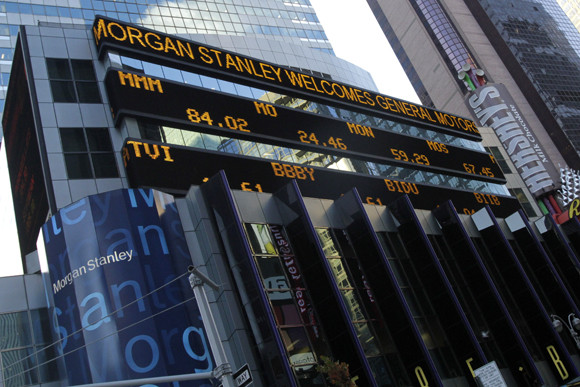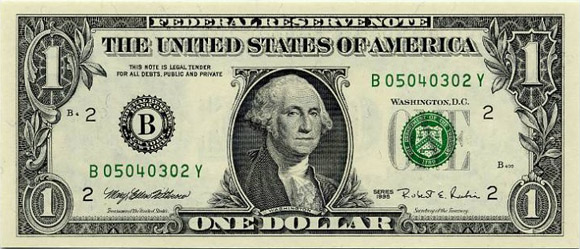Secret knowledge of stock exchange tickers

Among the 20 companies that entered the New York Stock Exchange from October to November 2013, the following eight organizations were: OCI Partners, Springleaf Holdings, Brixmor Property Group, Essent Group, 58.com, Mavenir Systems, Midcoast Energy Partners and Twitter. Among these firms are technology, energy, financial companies and real estate companies, the initial public offering of which was estimated at between $ 60 million (Mavenir Systems) and $ 24.5 billion (Twitter).
By the end of the first day of trading, Midcoast, Springleaf, 58.com and OCI rose in price, while Essent, Brixmor, Mavenir, and Twitter, by contrast, fell. At first, it is quite difficult to distinguish companies that will grow in price after an IPO from those who, on the contrary, will lose in price. Many experts say that it is almost impossible to confidently predict the behavior of stock prices when they enter the market.
')
Princeton economist Burton Malkiel wrote the famous phrase that “a monkey blindfolded throwing darts into the financial section of a newspaper in its classic labor on investing capital“ A Random Walk Down Wall Street ”(1973) can pick up a portfolio no worse than that which the experts will carefully select. ” Investors, as Malkiel claims, are thrown at the mercy of the market, and although stock prices tend to rise in the long run, it is almost impossible to consistently beat the market. By the way, Malkiel’s book has sold over a million copies.
Short-term investment is usually a roulette game, but if you return to the eight companies mentioned at the beginning of the article, you can distinguish one seemingly inconspicuous feature that distinguishes companies that have grown in price from those who have lost in price: Companies have tickers that are easy to pronounce according to the rules of the English language - so you can read them out loud, without adding unnecessary sounds, as if such words really existed. Shares of companies with spoken tickers - OCIP, MEP, LEAF and WUBA (OCI, Midcoast, Springleaf and 58.com, respectively) grew by 5-15%, while the difficult to pronounce in English ESNT, BRX, MVNR and TWTR (Essent , Brixmor, Mavenir, and Twitter) fell in price between 0.5-14%.
Eight companies are a non-representative sample in all respects, and stock prices are influenced by much more powerful forces — however, the relationship between the pronouncement of the ticker and the behavior of the stock at the time it enters the market remains in the case of a larger sample. (The trend does not change if you look at the tickers of all 23 companies that went IPO in the period from October to November: after spending 24 hours on the stock markets, 75% of companies with pronounced tickers increased in price, while among companies with hard-to-wear tickers, the increase in share prices was noted by only 47% of firms).
A few years ago, Daniel Oppenheimer and I explored the behavior of about 1,000 stocks that began trading on the New York Stock Exchange and the American Stock Exchange from 1990 to 2004. We have divided stocks with both spoken and hard-to-pronounce tickers. In both markets, shares with pronounced tickers showed higher rates in the period immediately after the IPO.
The effect was especially strong in the first few days of trading, it weakened over time, but never completely disappeared. A trader who invested a thousand dollars in a company with spoken tickers could earn $ 85 more than the one who invested in companies with unpredictable tickers. (We were convinced that these results were not obtained under the influence of external factors, such as the foreign origin of companies with pronounced or unpronounced tickers, their size or type of industry). Some of these results came as a surprise, but in addition we found out that companies with simpler names (such as, for example, NOVA Corporation) show better results than companies with complex names (like Magyar Telekom Távközlési Részvénytársaság). Other researchers of this question came to similar conclusions .
Why do investors, many of whom analyze huge amounts of information so carefully to understand the financial condition of companies, base their decisions on how the stock ticker of a particular stock looks? The answer is that pronouncing “convenient” tickers is somewhat easier from the point of view of mental expenses, and people tend to prefer objects and processes that are relatively easy to understand or simple to implement.
The same logic explains why we like people with simpler names more and why the phrase “patience and hard work all over” sounds more convincing than “patience and hard work will be crowned with success.” In both cases, an easier to understand concept seems closer, safer and more reliable - and the same is true for stocks or, more precisely, for economic decisions. Only a few investors admit that they choose stocks based on the sound of their tickers - such features of perception are fixed precisely because they act subconsciously.
A similar effect explains why some forms of currency seem more valuable than others. In one of the experiments, we interviewed dozens of adults and asked them to indicate what things they could buy for one dollar: how many clerical buttons, packs of Skittles, sheets of wrapping paper, or paper clips would be. Survey participants wrote answers on paper with either a standard one dollar note or a relatively rare coin , also worth one dollar. Like complex names, a rare currency is difficult to understand because it is unfamiliar to people. Those who had a dollar bill before their eyes thought that they could buy an average of 18% more goods on it than those who looked at the coin. We also found a relationship between how often a person came across a coin and how he estimated its purchasing power — the more familiar a dollar coin was to it, the higher its value for the respondent.
Of course, people perceive coins and banknotes in different ways, so we conducted another study, which was designed to more accurately capture the difference of this kind of perception. In this case, we asked the respondents the same task, but at the same time showed the images of the following banknotes:


After a second, most people realize that the first banknote is real, and the second one is fake. However, despite the fact that there were 6 differences between the banknotes, none of the respondents who were shown a fake dollar did not understand that it was a fake. (There is a similar task with a real penny and 11 fakes, which shows how poorly we memorize the details of even very familiar items). And, nevertheless, those who saw the real dollar, estimated its purchasing power almost twice as high as those who saw the fake. An unknown form of currency — even if you do not know for sure that it is unfamiliar to you — seems less valuable.
What does it say in practice? For consumers and investors, this means you need to be on your guard: outward simplicity can make you spend or invest more than you need. For entrepreneurs, it is important that, other things being equal, a simpler name is more profitable than a more complex one. Novelty, uniqueness and zest in some cases are advantages, but for the financial world these are most often disadvantages.
If you choose an exchange ticker for an IPO company, there is nothing wrong with trusting a monkey throwing darts at the board with a list of abbreviations - as long as there are more symbols like WUBA, OCIP and LEAF than names like BRX , SRLP or MVNR.
About the author: Adam Elter is the author of the book “ Drunk Tank Pink: And Weel , Feel, and Behave ” and an associate professor at the Department of Marketing at the Stern School of Business School at New York University, also working at the faculty Psychology of New York University. Some of the ideas presented in this article are presented in a modified form in “Drunk Tank Pink”.
Photo: Mary Elteffer
Source: https://habr.com/ru/post/205886/
All Articles